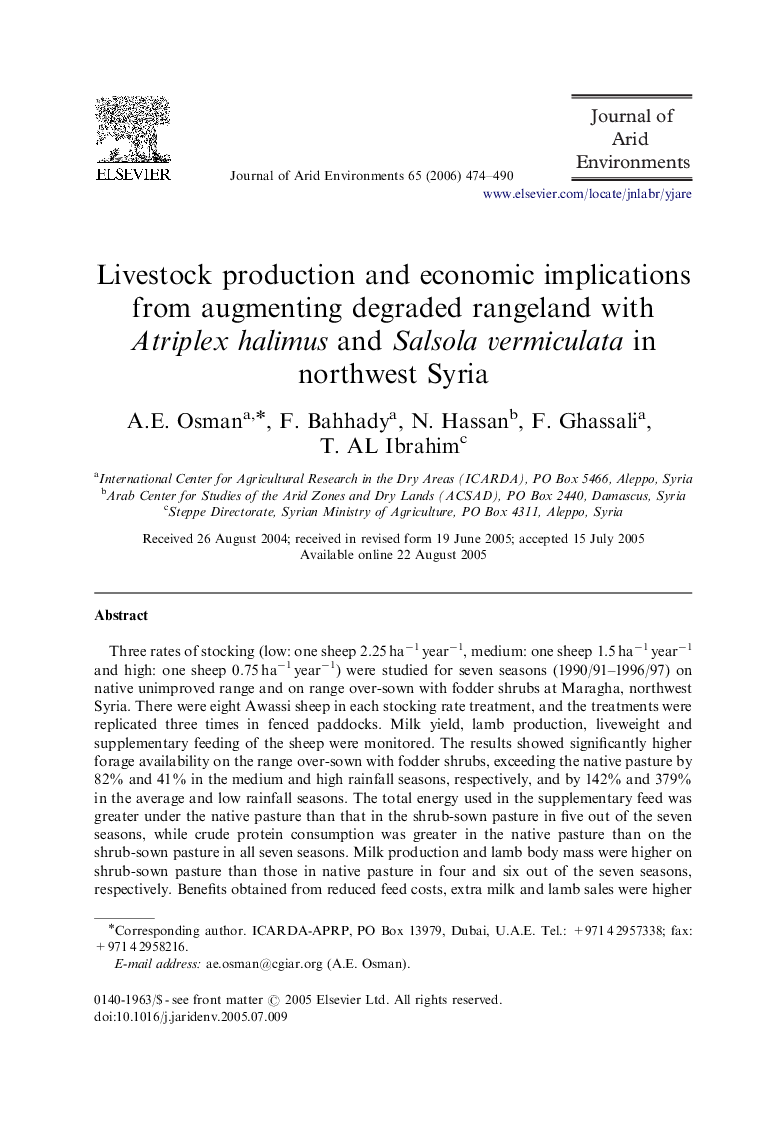| Article ID | Journal | Published Year | Pages | File Type |
|---|---|---|---|---|
| 4394771 | Journal of Arid Environments | 2006 | 17 Pages |
Three rates of stocking (low: one sheep 2.25 ha−1 year−1, medium: one sheep 1.5 ha−1 year−1 and high: one sheep 0.75 ha−1 year−1) were studied for seven seasons (1990/91–1996/97) on native unimproved range and on range over-sown with fodder shrubs at Maragha, northwest Syria. There were eight Awassi sheep in each stocking rate treatment, and the treatments were replicated three times in fenced paddocks. Milk yield, lamb production, liveweight and supplementary feeding of the sheep were monitored. The results showed significantly higher forage availability on the range over-sown with fodder shrubs, exceeding the native pasture by 82% and 41% in the medium and high rainfall seasons, respectively, and by 142% and 379% in the average and low rainfall seasons. The total energy used in the supplementary feed was greater under the native pasture than that in the shrub-sown pasture in five out of the seven seasons, while crude protein consumption was greater in the native pasture than on the shrub-sown pasture in all seven seasons. Milk production and lamb body mass were higher on shrub-sown pasture than those in native pasture in four and six out of the seven seasons, respectively. Benefits obtained from reduced feed costs, extra milk and lamb sales were higher on shrub-sown pasture than those in the native pasture in five out of the seven seasons. Total benefits measured over the entire study period were highest under the high stocking rate, reaching about 77 US$ ha−1. We concluded that shrub plantations in west Asia could safely be utilized at stocking rate of one sheep 0.75 ha−1 year−1 for the benefits of the pasture and users.
